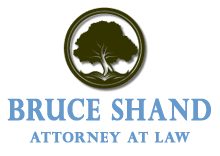Deciphering The Technical Language Of Trusts for Utah
NING, Ding, Grat. Ilit, Crat, Crut, Qtip.
So what are these oddly named trusts and what do people who need them need to know?
Ever been to a place where you don’t understand the language? Learning a new language is no easy task. At least when it comes to French or Italian (or Hindu, Swahili or Balinese, if you happen to be that well-travelled) most us of who can’t speak a lick can get through with pointing and smiling. However, when it comes to technical languages there is a different type of difficulty.
Without a doubt, the language of trusts is a technical language. In fact, this foreign language can intimidate even the savviest practitioners. The language of trusts is a powerful language and the trust, in its many flavors, is a powerful tool. How can you learn the lingo?
If you haven’t run into the technical language of trusts just yet, you should know that it is a world of acronyms and alphabet soup. You’d do well to have flash cards for a litany of trusts such as GRATs, CRUTS, CRATs, NING, DING, QTIP, and so on. Alternatively, you can learn a bit more of the lingo in a recent New York Times article titled “The Argot of Trusts, as Told in Acronyms.”
Each acronym and each form of trust for which it stands should be taken on its own to do it justice. Trusts are powerful machines that can be defined in very particular ways, not unlike backhoes, iPhones and particular accelerators. Each is a very different machine because it is made to do very different things. Such is the case with things like GRATs, CRUTs, and generic revocable trusts.
Don’t let the technical language get in the way, but do ask the right questions. Namely, what do I need to accomplish? What trust can accomplish my goals and is it the best route?
Not every trust is right for everyone or every asset, and some people will not be better off with a trust of any variety. Finding the right trust, or finding out if a trust is right at all, is about weighing your goals and assets. In this respect, a seasoned estate planning attorney is instrumental when it comes to teaching you the language, serving as translator, and forming the right plan for you.
Reference: The New York Times (March 28, 2014) “The Argot of Trusts, as Told in Acronyms”










Leave a Reply
Want to join the discussion?Feel free to contribute!